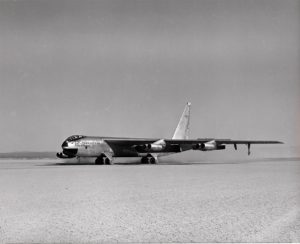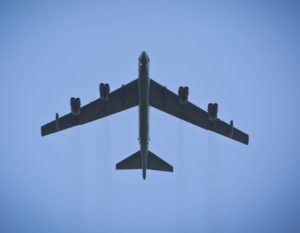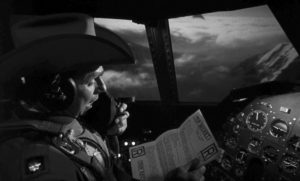
The year was 1945. The United States had just won World War II, but had already seen the writing on the wall for the next potential conflict. The Russians had proven to be valuable allies during war against the Axis powers, but now that it was over, the basic philosophical differences between the two nations were standing out more and more. Russia was now considered the Next Big Threat.
The B-29 had won the war with Japan, both figuratively and literally. Besides carpeting Japan and Japanese-held islands with conventional ordinance, B-29’s also dropped the two atomic bombs which caused the Japanese, for whom surrender was not an option, to give up.
But the Powers that Be were looking ahead. They had already commissioned a replacement for the B-29, the B-50. But they wanted a bomber with enough range to reach anywhere in the world from United States bases. They wanted the Russians to be afraid, VERY afraid, of what might rain down from above should they cause any threat to democracy.

Thus began a competition among aircraft manufacturers in 1945. They were to produce plans for a long-range bomber that would fill the bill.
Boeing won the contest, and was commissioned to begin producing a bomber with piston-driven engines. But it wasn’t long before everyone concerned realized that such an aircraft would prove unsatisfactory.
Jet engines were improving in power and efficiency very rapidly. So Boeing was told to create a prototype that was jet-powered.
On April 15, 1952, the YB-52 flew for the first time. It was a swept-wing design with eight jet engines hung beneath its massive wings. The Air Force liked what they saw.
After a few more revisions, the B-52 was introduced to the general public on March 18, 1954. Air Force Chief of Staff Nathan Twining said: “The long rifle was the great weapon of its day. …Today this B-52 is the long rifle of the air age.” The words proved to be more prophetic that Twining would ever dream.
Pilots and crewmembers soon dubbed the plane “Buff.” The milatarese nickname was short for Big Ugly Fat “Fellow.” Use your imagination about that last word. But the term was affectionate, as the airplane was recognized as a quantum leap in design and functionality.
Just how great was this airplane? Well, longevity is the ultimate test of quality.

Imagine taking a 1955 Oldsmobile, considered a classic by automobile aficionados. Now, let’s install a GPS, night vision (no more pesky headlights), the most advanced and powerful engine that 2008 has to offer, and replace all of the analog instruments with state-of-the-art electronics. While we’re at it, let’s streamline the design a bit, but not so much that the car can’t be instantly recognized as being a design that is fifty years old. Now, imagine if this car could hold its own with the hottest BMW’s, Mercedes’, and Jaguars.
NOW you can begin to appreciate the timelessness of the B-52’s design.
In fact, the airplane, which has not been manufactured since October, 1962, is slated to remain in service until 2040. A total of 744 were manufactured, and today less than 100 continue to fly. But the small fleet provides unparalleled long-range service that the young whippersnapper designs can’t come close to. A large number of the grounded planes exist to provide replacement parts for those still flying.
The airplane also became a part of popular culture with many appearances in movies and television shows, perhaps the most memorable in Stanley Kubrick’s Doctor Strangelove.
The next time you look up and spot contrails high in the sky that are in formation, get out your binoculars. You may well spot some of the remaining B-52’s, unassumingly doing their job, as they have since Howdy Doody was on television.